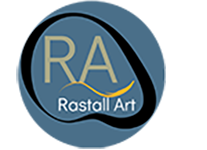Paul Maze Art for Sale
Paul Lucien Maze (1887 - 1979)
The Last of the Post Impressionists
Paul Lucien Maze was born in Le Harve, France in 1887.
Maze initially worked for his father, but with the start of World War 1, Maze joined the war efforts. He joined the Royal Scots Greys after being rejected by the French Army on health grounds. Maze had several close calls during the war, including being caught by the British, where his lack of paperwork and unusual uniform led to the British thinking he was a spy and sentenced him to death by firing squad. Luckily, an officer from the Royal Scot Greys recognised him at the last minute and secured his release. He continued his war time career as a liaison office and interpreter and then a draftsman, sketching behind enemy lines. He was wounded 3 times in 4 years. He was decorated with the Distinguished Conduct Medal and Military Medal by the British. France honoured him with the Croix de Guerre and Order National de la Legion d’honneur.
From his early schooling in England he grew to love the English culture and Maze became a British subject in 1920, marrying Margaret Nelson in 1921.
Maze loved British Pageantry hence the many military paintings, guards trooping and works often depicting racing and horses. He also enjoyed his adopted Sussex landscape, and summer yachting.
He exhibited in galleries across London, America and Paris and in 1939 exhibited in New York, with Winston Churchill writing his catalogue forward - “His great knowledge of painting and draughtsman-ship have enabled him to perfect his remarkable gift. With the fewest strokes he can create an impression at once true and beautiful. Here is no toiling seeker after preconceived effects, but a vivid and powerful interpreter to us of the forces and harmony of Nature”
Maze divorced Margaret in 1949 and in 1950 married Scottish born Jessie Lawrie. Soon after, in 1952 Maze had a solo show at the Wildenstien Gallery New York.
Many have called him “The Last of the Post Impressionists” as he was influenced by his father’s artistic circle of friends, which included Camille Pissaro, Raoul Duffy, Claude Monet and Pierre-Auguste Renoir. Pissaro taught Maze to paint from an early age. He was also encouraged to work in Pastels by Edouard Vuillard (1868 – 1940).
Maze’s work is highly collectable, has been held in the private collection of Queen Elizabeth and The Queen Mother; and his paintings and art can be viewed in public galleries including the Tate and Bank of England Museum.
Sources: www, including www.artbiogs.co.uk


